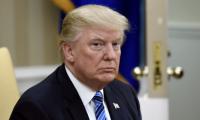The coronavirus continues to dominate the news cycle and is occupying pretty much the entire attention of all in the US.
Since I wrote about this two weeks ago, confirmed coronavirus cases in the US have gone up from 30,000 to over 330,000 and deaths from the virus are approaching 10,000. The US is now clearly the most affected country in the world.
Just as the disease has spread and taken its toll, attitudes of Americans have changed sharply and grown darker. People are rapidly realizing this is not a disease that will only affect certain parts of the country. New York State, and specifically the City has been hardest hit, with almost half of all cases in the country taking place there. This isn't too surprising. New York City is the gateway to the country. It receives large numbers of overseas visitors – business people and tourists alike. And, most parts of New York City are very densely populated.
Andrew Cuomo, the governor of New York, is providing daily briefings and reporting that the city's healthcare system is under tremendous stress, even at risk of total collapse in the coming few days. Caring for coronavirus patients is a very complex task and is being done heroically by healthcare workers at great risk to themselves and even their families.
It is unfortunate to hear that basic tools needed by medical staff, personal protective equipment (PPE) such as masks and gloves are in short supply. Most of these are produced outside the US and there is intense competition among countries and even states within the US to get their hands on them. A recent emergency decree invoked by President Trump is said to have diverted supplies to the US which were contractually obligated to be delivered to other parts of the world. One can only wonder where this kind of fight may lead.
Even as the country grapples with the health effects of the virus, the economic devastation that is taking place is becoming increasingly clear. Just in the last two weeks about 10 million Americans have filed for unemployment benefits. It is being said this is just the tip of the iceberg.
In the next three to four weeks an estimated 20-25 million Americans may be joining the ranks of the unemployed and the unemployment rate may reach above 20 percent. While the country does provide a safety net, such payments do not last more than 10 to 12 weeks and will not come close to making up for lost income. About 96 percent of all Americans are under total lockdown.
The US Congress has just approved a $2.2 trillion rescue package which includes payments to large corporations that are affected, small businesses and individuals who have lost their livelihoods. To put this in perspective, this rescue package is equal to half of the total government budget.
It has taken a while for the economic reality to sink in, but the alarm bells are now ringing loud and clear. In a Pew Research poll conducted between March 19 and 24, around 88 percent of Americans indicated that the coronavirus is a major threat to the US economy, compared to only 66 percent who felt it is a threat to health. Since then the concern has only grown higher.
The US government has been running large deficits for over a decade now. So, any additional spending is coming from borrowed money, or by simply printing dollars. How this will impact the economy, we will find out in the coming months and even years, but the short to midterm economic picture for the US is looking quite alarming.
The writer is a freelancecontributor based inWashington DC.
Website: www.sqshareef.com/ blogs
People stand in line up as election officials check their ballot papers during voting general election at a polling...
Women show their voter identity cards as they stand in a queue before casting their votes in Agartala. — PTIThe 18th...
Former prime minister Imran Khan. — Instagram/ imrankhan.ptiAn old saying has it that “when you dance with the...
Kashmiris in Indian illegally occupied Kashmir protesting against the Indian occupation as the forces of India looked...
A representational image showing residents walking at a wholesale market in Karachi. — AFP/FileOnce again there is...
A representational image showing late Pakistani human rights activist and Supreme Court lawyer Asma Jahangir. —...







